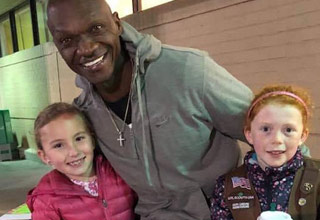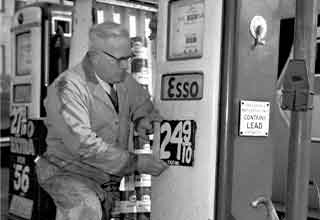PSYCHOPATHS AMONG US
This is a condensed version I put together. You can find the full version at:
http://www.hare.org/links/saturday.html PSYCHOPATHS AMONG US Dr. Robert Hare claims there are 300,000 psychopaths in Canada, but that only a tiny fraction are violent offenders like Paul Bernardo and Clifford Olsen. Who are the rest? Take a look around By Robert Hercz
A psychopath can never be made to feel the horror of murder. Weeks of intense therapy, which are producing real breakthroughs in the other youths, will probably make a psychopath more likely to reoffend. Psychopaths are not like the rest of us, and everyone who studies them agrees they should not be treated as if they were.
I think of Bob Hare, who's in New Orleans receiving yet another award, and wonder if he's feeling frustrated. A lifetime spent looking into the heads of psychopaths has made the slight, slightly anxious emeritus professor of psychology at the University of British Columbia the world's best-known expert on the species. Hare hasn't merely changed our understanding of psychopaths. It would be more accurate to say he has created it.
Psychopathy may prove to be as important a construct in this century as IQ was in the last (and just as susceptible to abuse), because, thanks to Hare, we now understand that the great majority of psychopaths are not violent criminals and never will be. Hundreds of thousands of psychopaths live and work and prey among us. Your boss, your boyfriend, your mother could be what Hare calls a "subclinical" psychopath, someone who leaves a path of destruction and pain without a single pang of conscience. Even more worrisome is the fact that, at this stage, no one -- not even Bob Hare -- is quite sure what to do about it.
Like every scientist, Hare likes a good puzzle, and that was reason enough to make a career out of psychopaths. "These were particularly interesting human beings," he says. "Everything about them seemed to be paradoxical. They could do things that a lot of other people could not do" -- lie, steal, rape, murder -- "but they looked perfectly normal, and when you talked to them they seemed okay. It was a puzzle. I thought I'd try and unravel it."
Hare arrived at UBC in 1963, intending to follow up his doctoral research on punishment. Certain prisoners, it was rumoured, didn't respond to punishment, and Hare went to the federal penitentiary in New Westminster, British Columbia, to find these extreme cases. (He found plenty. In his chilling 1993 book on psychopathy, Without Conscience: The Disturbing World of the Psychopaths Among Us, he quotes one specimen's memories: "[M]y mother, the most beautiful person in the world. She was strong, she worked hard to take care of four kids. A beautiful person. I started stealing her jewellery when I was in the fifth grade. You know, I never really knew the bitch -- we went our separate ways.")
For his first paper, now a classic, Hare had his subjects watch a countdown timer. When it reached zero, they got a "harmless but painful" electric shock while an electrode taped to their fingers measured perspiration. Normal people would start sweating as the countdown proceeded, nervously anticipating the shock. Psychopaths didn't sweat. They didn't fear punishment -- which, presumably, also holds true outside the laboratory. In Without Conscience, he quotes a psychopathic rapist explaining why he finds it hard to empathize with his victims: "They are frightened, right? But, you see, I don't really understand it. I've been frightened myself, and it wasn't unpleasant."
The most startling finding to emerge from Hare's work is that the popular image of the psychopath as a remorseless, smiling killer -- Paul Bernardo, Clifford Olson, John Wayne Gacy -- while not wrong, is incomplete. Yes, almost all serial killers, and most of Canada's dangerous offenders, are psychopaths, but violent criminals are just a tiny fraction of the psychopaths around us. Hare estimates that 1 percent of the population -- 300,000 people in Canada -- are psychopaths.
He calls them "subclinical" psychopaths. They're the charming predators who, unable to form real emotional bonds, find and use vulnerable women for sex and money (and inevitably abandon them). They're the con men like Christophe Rocancourt, and they're the stockbrokers and promoters who caused Forbes magazine to call the Vancouver Stock Exchange (now part of the Canadian Venture Exchange) the scam capital of the world. (Hare has said that if he couldn't study psychopaths in prisons, the Vancouver Stock Exchange would have been his second choice.) A significant proportion of persistent wife beaters, and people who have unprotected sex despite carrying the AIDS virus, are psychopaths. Psychopaths can be found in legislatures, hospitals, and used-car lots. They're your neighbour, your boss, and your blind date. Because they have no conscience, they're natural predators. If you didn't have a conscience, you'd be one too.
Psychopaths love chaos and hate rules, so they're comfortable in the fast-moving modern corporation. Dr. Paul Babiak, an industrial-organizational psychologist based near New York City, is in the process of writing a book with Bob Hare called When Psychopaths Go to Work: Cons, Bullies and the Puppetmaster. The subtitle refers to the three broad classes of psychopaths Babiak has encountered in the workplace.
"The con man works one-on-one," says Babiak. "They'll go after a woman, marry her, take her money, then move on and marry someone else. The puppet master would manipulate somebody to get at someone else. This type is more powerful because they're hidden." Babiak says psychopaths have three motivations: thrill-seeking, the pathological desire to win, and the inclination to hurt people. "They'll jump on any opportunity that allows them to do those things," he says. "If something better comes along, they'll drop you and move on."
How can you tell if your boss is a psychopath? It's not easy, says Babiak. "They have traits similar to ideal leaders. You would expect an ideal leader to be narcissistic, self-centred, dominant, very assertive, maybe to the point of being aggressive. Those things can easily be mistaken for the aggression and bullying that a psychopath would demonstrate. The ability to get people to follow you is a leadership trait, but being charismatic to the point of manipulating people is a psychopathic trait. They can sometimes be confused."
"A lot of white-collar criminals are psychopaths," says Bob Hare. "But they flourish because the characteristics that define the disorder are actually valued. When they get caught, what happens? A slap on the wrist, a six-month ban from trading, and don't give us the $100 million back. I've always looked at white-collar crime as being as bad or worse than some of the physically violent crimes that are committed."
And into the ethical and political realm -- the realm of extrapolation, of speculation, of opinion -- Hare will not step. He's been asked to be a guest on Oprah (twice), 60 Minutes, and Larry King Live. Oprah wanted him alongside a psychopath and his victim. "I said, 'This is a circus,' " Hare says. "I couldn't do that." 60 Minutes also wanted to "make it sexy" by throwing real live psychopaths into the mix. Larry King Live phoned him at home while O. J. Simpson was rolling down the freeway in his white Bronco. Hare says no every time (while his publisher gently weeps).
Even in his particular area, Hare is unfailingly circumspect. Asked if he thinks there will ever be a cure for psychopathy -- a drug, an operation -- Hare steps back and examines the question. "The psychopath will say 'A cure for what?' I don't feel comfortable calling it a disease. Much of their behaviour, even the neurobiological patterns we observe, could be because they're using different strategies to get around the world. These strategies don't have to involve faulty wiring, just different wiring."
Are these people qualitatively different from us? "I would think yes," says Hare. "Do they form a discrete taxon or category? I would say probably -- the evidence is suggesting that. But does this mean that's because they have a broken motor? I don't know. It could be a natural variation." True saints, completely selfless individuals, are rare and unnatural too, he points out, but we don't talk about their being diseased.
Hare's work on treatment, only address the violent minority of psychopaths. What about the majority, the subclinical psychopaths milling all around us? At the moment, the only thing Hare and his colleagues can offer is self-protection through self-education. Know your own weaknesses, they advise, because the psychopath will find and use them. Learn to recognize the psychopath, they tell us, before adding that even experts are regularly taken in.
After thirty-five years of work, Bob Hare has brought us to the stage where we know what psychopathy is, how much damage psychopaths do, and even how to identify them. But we don't know how to treat them or protect the population from them. The real work is just beginning. Solving the puzzle of the psychopath is an invigorating prospect -- if you're a scientist. Perhaps the rest of us can be forgiven for our impatience to see the whole thing come to an end.
Heres a great link to an ABC video production:
http://www.sott.net/articles/show/201472-Psychopaths-Among-Us-An-ABC-News-Report






7 Comments